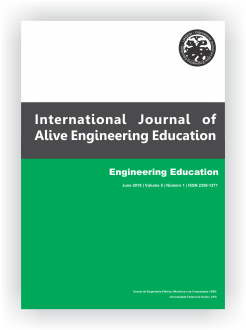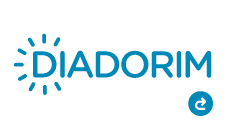Social Electrical Engineering: A Pathway for Better Undergraduate Education
DOI:
https://doi.org/10.5216/ijaeedu.v5i1.48146Keywords:
collaborative education, electrical engineering, extension projects, visually impairedAbstract
As engineering skills becomes a commodity, electrical engineers’ programs are urged to adapt their pedagogical strategies do better prepared their graduates. The 21st century engineers are expected to have a strong technical background while being capable to work with people with different kinds of intellectual and social capitals, and to have a high level of cognitive flexibility. This article reports on the application of an information appropriation method, adopted by the Department of Electrical Engineering at PUC-Campinas, where activities on extension projects are simultaneously conducted along with the regularly schedule classes. The study case is related to the coplanning and cocreation of a technological white cane (proof of connect) between electrical engineering students, social technicians and the visually impaired. In the present case, the technicians were led to reinterpret, adapt and reinvent technology while contributing to the design and build of a low cost adaptive electronic sensing aid attachable to a white cane. The collaborative method, applied during conversation rounds, is based on a virtuous cyclic process which includes steps like information capture, validation, guidance and feedback. The engineering students, on the other hand, have the opportunity to develop their communication, analysis and interpretation skills in a way not available in the classroom. They also experience solving conflict situations and find creative uses and applications for they knowledge not otherwise foreseen. The participating students transformed information into knowledge through a dialogical experience with people having a contrasting technological background to its own. Through this experience the engineering graduates emerged with a greater sense of responsibility with the society and a better understanding of what means to be an engineer. Participation in the Extension Project also brought up several opportunities of professional recognition by the technicians and the visual impaired themselves, which stimulated the students do achieve better performance in the course.References
Rose Luckin, Ed Baines, Mutlu Cukurova and Wayne Holmes with Michael Mann, “Solved! Making the case for collaborative problem-solving”, NESTA, National Endowment for Science, Technology and the Arts, march 2017, available at: http://www.nesta.org.uk/publications/solved-making-case-collaborative-problem-solving.
Lueny Morell, “Engineering Education in the 21st Century: Roles, Opportunities and Challenges”, 4th NEA ICETE Conference Proceedings, Taichung, Taiwan, October 2010.
Khairiyah Mohd-Yusof, Syed Ahmad Helmi, Fatin Aliah Phang and Shahrin Mohammad, “Future Directions in Engineering Education: Educating Engineers of the 21st Century”, ASEAN Journal of Engineering Education, 2(1), pp 8-13, 2015.
Dan Craddock, “Preparing Students for de 21st Century Challenges”, jun 2016, available at https://www.ewb-uk.org/complexproblemsineducation/
World Economic Forum. 2016. Global Challenge Insight Report: The future of jobs, employment, skills and workforce strategy for the fourth industrial revolution. [online]. Geneva: World Economic Forum. Available at: http://www3.weforum.org/docs/WEF_Future_of_Jobs.pdf
Engineering Education: Transformation and Innovation, D. Beanland & R. Hadgraft, UNESCO Report, 2013.
‘Draft Collaborative Problem Solving Framework.’ Paris: OECD. Retrieved from:
http://www.oecd.org/pisa/pisaproducts/DraftPISA2015 CollaborativeProblemSolvingFramework.pdf
Anderson G.Domingues and Amilton C. Lamas, “Dispositivo Eletrônico de Mapeamento – uso em Bengala Branca”, to be presented at 45o Congresso Brasileiro de Educação em Engenharia – COBENGE 2017, September 2017.
Amilton C. Lamas, “Método Cíclico de Apropriação de Conhecimento – Uma aplicação na Comunidade de Deficientes Visuais’, to be presented at II Congresso Internacional de Criatividade e Inovação, June 2017
Downloads
Published
Issue
Section
License
Copyright
The author is responsible for the following statements by submitting an article electronically in the International Journal of Alive Engineering Education (IJAEEdu):
a) States that the document in question was reviewed by an expert in English language and it is an original work and it holds the prerogative to grant the rights contained in this license. It also states that the document does not infringe, as far as it is possible to know the rights of any other person or entity.
b) If the document in question contains material which does not hold the copyright, the author states have obtained the copyright holder’s permission to grant the Universidade Federal de Goiás (UFG) the rights required by this license, and that such material whose rights are third is clearly identified and acknowledged within the text or content of the document.
c) States that the study was conducted in accordance with the ethical standards of all applicable institutional, local, national and international guidelines.
d) It also states that any person appointed as author or co-author of the document is aware of it and agrees to be so appointed.
Authorization Form
As responsible for the submission of the document, I authorize the School of Electrical, Mechanical and Computer Engineering of the Federal University of Goiás to provide the paper free of charge, through the Electronic System for Publishing Magazines UFG (SEER / UFG) or in printed form, without compensation of copyright, in accordance with Law No. 9610/98. Is allowed, reading, printing and / or download, as a promotion of the Brazilian scientific production. Any use of the work not authorized under this license or the copyright law is prohibited.



